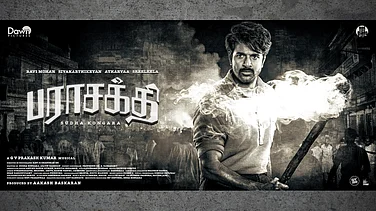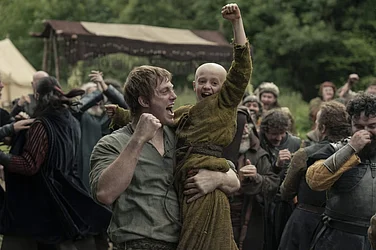“If my son Daniel was not one of the victims, he would be here with me today,” says the father of 15-year-old Daniel Mauser—one of the 12 students killed at Columbine High School in Littleton, Colorado, on 20 April, 1999. Speaking to the camera for Michael Moore’s documentary, Bowling for Columbine, Mauser’s father—choking, unable to sip even water—was not the only one utterly traumatised by the shooting; thousands have been enlisted as sufferers since that fateful day when 12th graders Eric Harris and Dylan Klebold stormed across the school with the intention to bomb it, failing which the massacre ensued. On the same day, the US achieved the feat of having dropped the largest number of bombs on erstwhile Yugoslavia during the Kosovo War, a point that Moore’s documentary does not miss. With school shootings in the US featuring regularly in the news today, the grim reality of Bowling for Columbine is, by no means, an artefact of the past.
Closer home, and barely a month ago, 21-year-old Sneha Chaurasia was shot dead by ‘jilted lover’ Anuj Singh on the Shiv Nadar University campus where they were both students. Chaurasia’s father asks, “How can you let a man roam around with a gun?”, a question one is forced to consider in the face of an uptick in violent crimes by young people. When Columbine happened, politicians in the US were quick to blame the violence within video games, films and music for pushing youth towards such grave crimes. This rhetoric continues to this day. But how true is this notion? To what extent can portrayals of juvenile delinquency in films be held responsible for encouraging youth along the same path? In unpacking the multidimensional factors behind gun culture in the US, Moore is able to hold political leaders and media narratives responsible for events such as Columbine; however, it is still not clear what factors are pushing Indian youth towards such drastic steps.
Does Nature Imitate Art?
In January 2022, three children were brutally stabbed at Jahangirpuri in New Delhi. Upon enquiry, the police found that the killer was influenced by the wildly popular Allu Arjun-starrer Pushpa. The same year in August, a 14-year-old boy was arrested by the Gujarat police in Surat for procuring a country-made revolver for Rs. 6,000 from UP. He also told the police that he was addicted to crime web series and would “get an adrenaline rush” whenever he saw armed protagonists, and would even show off or use the weapon to frighten others in his locality.
These incidents establish a direct connection between delinquent behaviour and violence shown in films, an argument supported by a study conducted by psychiatrist Dr. Samir Parikh in 2008 with a sample size of 1,000 people aged 14-17. The study found that 79 per cent of the boys “loved watching violent movies” and 44 per cent of them had the urge to hit others. Interestingly, many of them said that they knew of friends who “carried weapons for protection”.
This idea of self-protection stems mostly from three sociopolitical contexts. Firstly, the neo-liberal state’s withdrawal from the lives of the people where the state fails to offer any perception of security. Secondly, the idea of ‘responsible citizenry’—as shown in Moore’s film—who consider protecting one’s house from ‘invaders’ by being armed as a sign of being responsible. And lastly, the peddling of a ‘culture of fear’ by the media that pushes one to believe that they are living through a crisis of safety.

Violence as an Accepted Norm
In recent times, there has been a slew of web series in Hindi that have tackled the issue of gun violence and related issues such as caste politics, class wars, juvenile delinquency and male aggression. Ashim Ahluwalia’s Class, season 3 of Rohan Sippy’s Criminal Justice and Tigmanshu Dhulia’s Garmi are a few examples. While Class deftly handles the tension stemming from sexuality and emasculation in a posh international Delhi school, Criminal Justice shines a light on the gaps in our police and judicial systems. Meanwhile, Garmi focuses on political violence in north Indian college campuses and shows how the accessibility and availability of guns as well as political patronage allows for violence to be carried out with impunity. It is clear that from the days of Gangs of Wasseypur to Garmi, Indian audiences have been given regular doses of gun violence. How might this exposure have affected the country’s children and youth?
Dr. Parikh, currently the director of the Fortis National Mental Health Programme, says, “There is robust evidence that when children are exposed to violence, a couple of things happen to them: disinhibition and desensitisation towards violence.” He adds that children may end up believing in a distorted reality where violence is an accepted norm. The source of such learning could be family, society or anything that they watch on television, giving them what Dr. Parikh refers to as “an aggressive arousal.” “Violence begets violence and aggression begets aggression,” he adds.
Film scholar Sayandeb Chowdhury, however, says, “A popular film is seen by thousands, but the proportion of violence that can directly refer back to any particular film is usually negligible. At the same time, the slow, immeasurable impact of many films over a period of time cannot be overlooked. In other words, it’s like osmosis, which in terms of psychology, can lead to a case of transference,” says Chowdhury.
According to Chowdhury, while early Indian cinema was not non-violent either, there is a perceptible difference in current films insofar as violence is projected as an acceptable and legitimate solution to a problem.
“The visceral violence that routinely masquerades as entertainment may have unchained violence from the last bit of moral nudging that may have existed....”, notes the author of Uttam Kumar: A Life in Cinema. “Like cinema, politics is also making it legal to seek a solution in violence as an answer to complicated problems,” he adds.
Deep Roots of Social Violence
Does the phenomenon of gun violence in India have contextual similarities to its US counterpart? Feminist sociologist Rukmini Sen says, “While the natural connection to gun culture in US colleges seems obvious, the unique histories of violence in Indian higher education institutes cannot be overlooked.” Sen argues that the epidemic of violent behaviour must have its roots deep inside a society that is violent in itself. “Killing lovers whose relationship is not acceptable is a social reality (in the Indian context), one that is constantly portrayed in films from Qayamat se Qayamat Tak (1988) to Sairat (2016). Death by suicide to end the ‘shame’ attached to an unacceptable love/intimate relationship is also common. It’s important to look at our own social roots of violence,” adds the scholar.
In Sen’s opinion, films cannot be held entirely responsible for the violence that happens off-screen because “films have their own responsibility to portray social violence.” She adds, “It might be a good exercise to see how films may have dealt with stories of familial violence (Mrityudand) or rape (Ghar) to inter caste/community love (Masaan/Bombay) to exploring consensual sexual intimacy (Wake Up Sid/Dear Zindagi). Social/relational transformation is inevitable and films need to portray that,” says Sen.
In Search of Accountability
The discussion over children and youths’ exposure to violence is not new. It has its roots in the Cinematograph Act, 1952, according to which a fight scene should not last longer than 3 minutes and a chase scene should not linger for more than a few minutes. According to the National Commission for Protection of Child Rights Act, 2005, children less than 12 years of age must not be shown as being tortured or engaged in any violent activity in cinema. But this begs the question of how many production houses are held accountable for violating the norms laid down by the act?
In the last scene of Bowling For Columbine, Moore is seen interviewing Charlton Heston, the then president of the National Rifle Association (NRA), a gun rights advocacy group in the US. When faced with uncomfortable questions related to his pro-gun rally organised days after a six-year-old boy shot his classmate, Heston walks out of the interview but not before Moore asks him to look at the picture of the girl who was killed. When he doesn’t turn back, Moore places the photo of the girl at his home for all to see, perhaps with the expectation that someday it would haunt Heston enough to make him break his silence on gun violence.
The story goes that the killers at Columbine High School were engaged in the laughably innocuous activity of bowling before they shot their 900 rounds of ammo. What might have Sneha Chaurasia’s killer at SNU been doing before he shot her? Has the desire to kill become so banal that he, Anuj Singh, might have sat at the canteen among his peers before heading over to commit the heinous act? Does the ‘sensationalisation’ of such news by the media desensitise us to the ‘banality of evil’, to borrow Hannah Arendt’s term? Perhaps a photograph of 21-year-old Sneha Chaurasia, a student of sociology, needs its own special corner from where it should haunt us into holding evil accountable.
(This appeared in the print as 'An Audience For Violence')



























